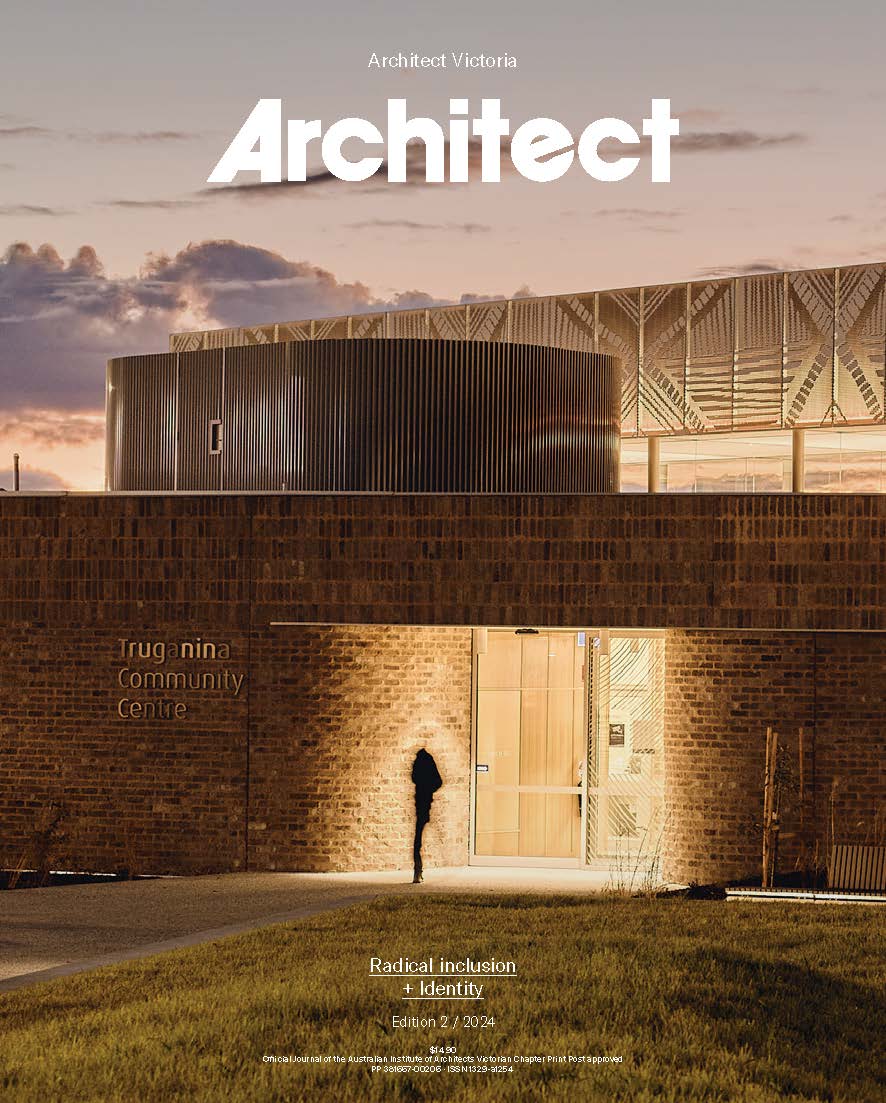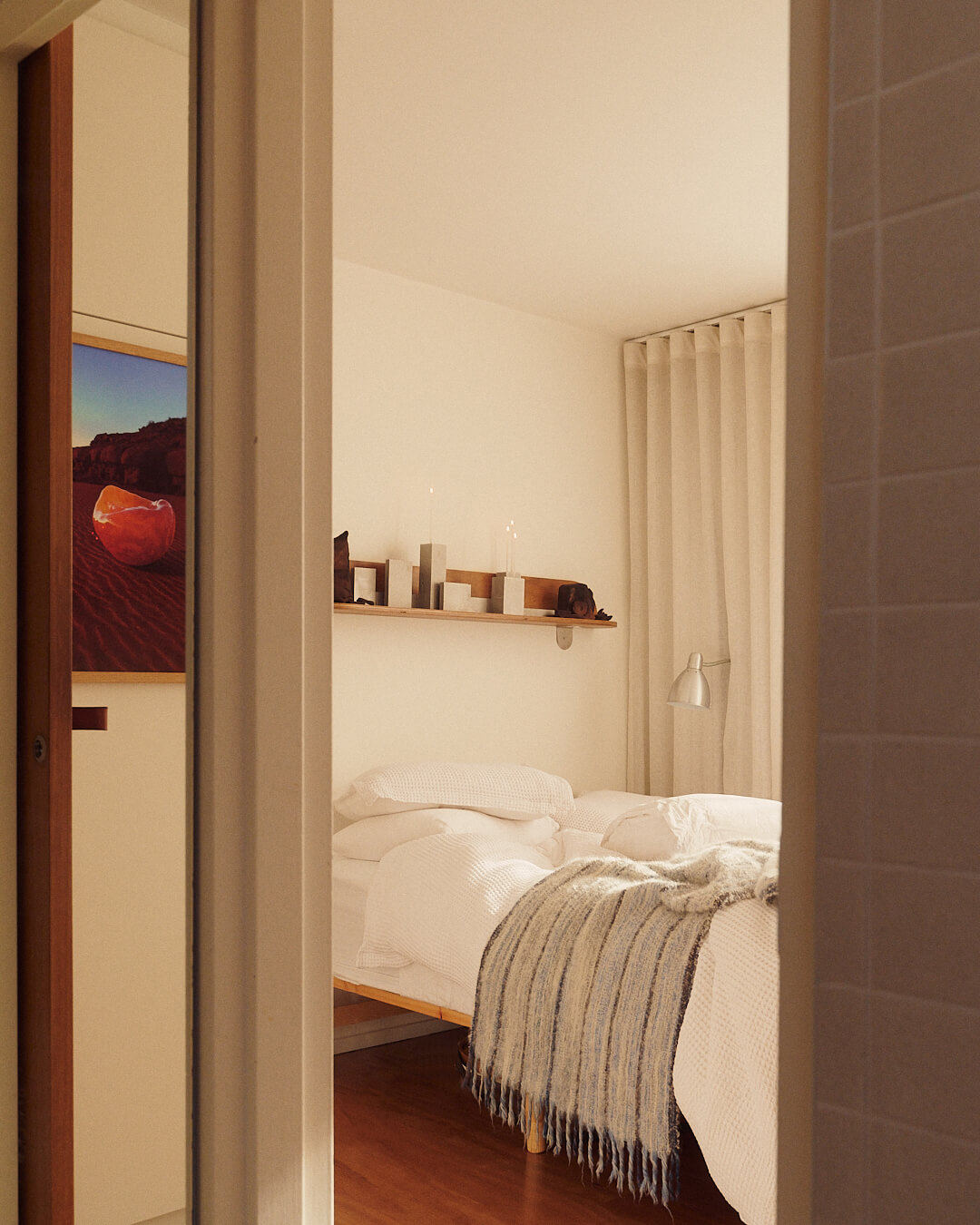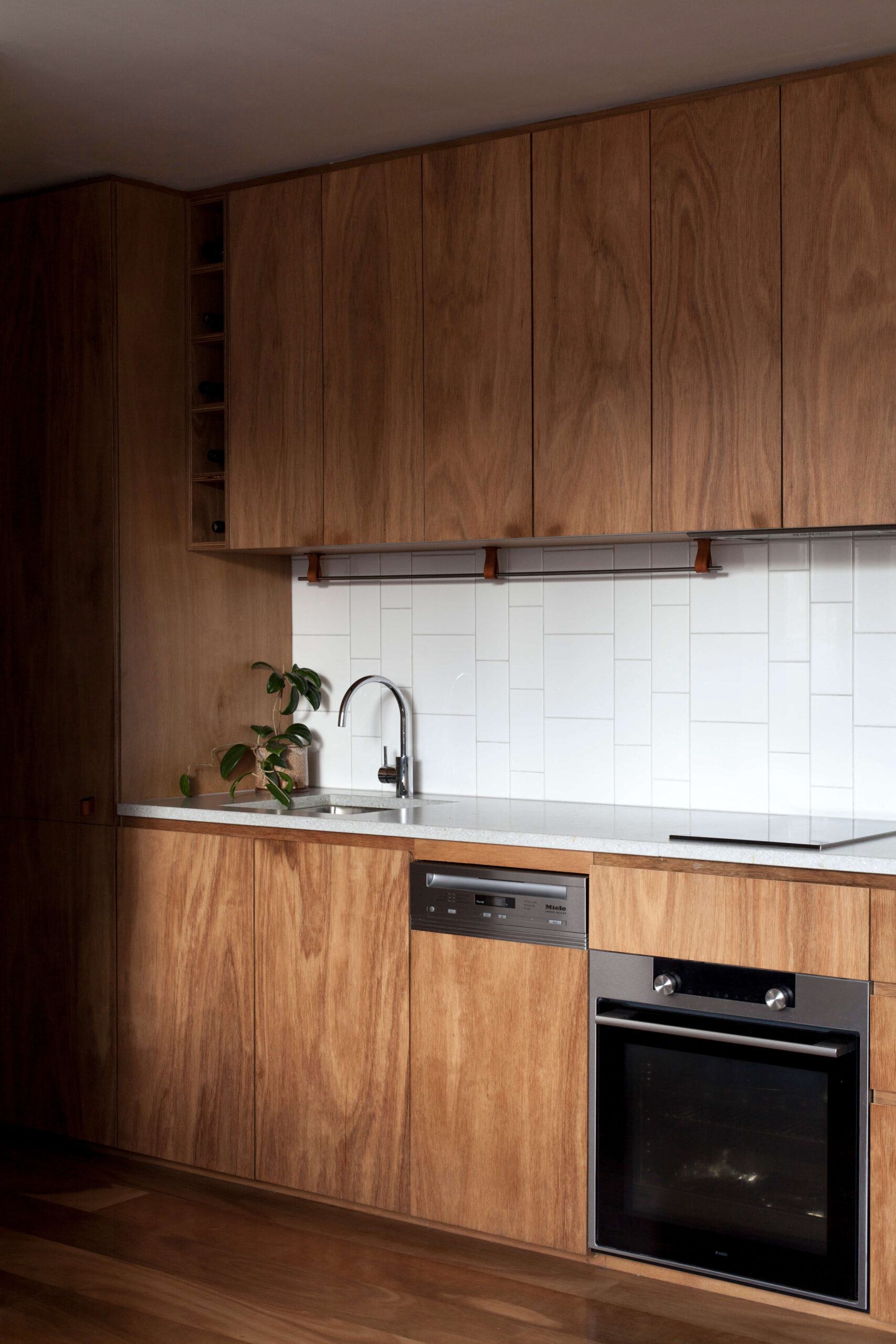Gore Street Apartment: Rebecca Lewis
Words by Rebecca Lewis

I was 26 when I bought my apartment. Young, inexperienced, green as an olive. I had been house-hunting for nine months when I stepped inside the 1960s Gore Street apartment. It had stained carpet, enclosed beige, baby blue and turquoise walls, rotting timber windows and a kidney-shaped bench. Yes, I thought, this was the place for me. After winning the auction and shakily handing over my life’s savings with tears in my eyes, I was completely unprepared for the next three years.
These are the moments that surface when I reflect upon the entire experience. These memories are not of pursuing refined details and Insta-worthy spaces. They are memories of pushing shit uphill when everything is going wrong.
My firm belief should be raised here, to provide a backbone for what would otherwise be a questionable investment. I’m a strong believer that buildings should be reused, and, regardless of appearances, there is potential to breathe life into any existing space. In our current housing crisis, looking into obscure corners and bending the way we see opportunity is paramount. I also believe that the unredeemable mental stigma associated with derelict spaces can be repaired, without demolition.
On a more personal note, (as an architect) I was driven by a need to prove that it could be done. I had been informed that I was plateauing at work, and I might be in the wrong industry; architecture may not be for me. This, unfortunately, is not a dissimilar experience many students encounter after they graduate from university. At the time, I was trapped in a toxic relationship, sliding further downhill at work and surrounded by my endless apartment designs that never seemed complete. To add to my trainwreck, I was living like a squatter in my own apartment while being harassed by a Peeping Tom, who haunted my windows for over a year. And finally, my dad was diagnosed with cancer. At this lowest of lows, I sat on my swivel chair (the only other seat I owned was my toilet), looked around and did the only logical thing; I took a sledgehammer to the wall.
Looking back, I realise the gravity of how architecture defines our physical space and how our physical space shapes our mental space. It was at this point that I understood that they are one and the same thing. As architects, we underestimate the potency we have on the psychology of those we design for. My space was broken, and therefore so too was I. I didn’t need a highly curated design worthy of an award. I craved peace, warmth, nourishment and to feel safe again. I wanted a home. As my close friend Brett Mitchell writes, architecture creates a ‘here’ for our ‘where’. And if we have no ‘here’, then we are ‘nowhere’. For me, this is our fundamental duty of care as architects.
There are many other memorable moments that come to mind. Carrying a bathroom sink on the plane because what I needed was in Sydney. Knocking a hole in the wall and realising the neighbour’s sewerage pipe ran through my kitchen. Demolishing the entire kitchen using a single pink screwdriver. Fashioning a raw leather belt into joinery handles and heating it on a fry pan. (A desperate attempt to achieve the right shade of tan. As it turns out, an iron works best.) And more frequently, watching time drag on, wondering if I would even make it through at all.
Since completion, this apartment now contains some of my happiest memories: time spent in warm gatherings around a tiny coffee table; the sun trickling in through the leaves during cold winters; and more recently, finding sanctuary during lockdown. Now, it has been an unexpected delight to share it with others as an Airbnb. It was part of the recent Melbourne Design Week as a backdrop for Soft, a display of exquisite objects handcrafted by local artists which was curated by Andy TT and Calum Hurley. Something which was beyond what I had envisioned for this tiny, simple home. Hearing others’ experiences of the space has meant its meaningfulness and identity have taken form into something I had not imagined.
As for this question of identity, it does not simply exist; it is made. Cripplingly slowly. It is not one grand sweeping gesture, but an accumulation of many small incremental moments, both defeats and victories. Much like the work of artists, our work is the externalisation of our internal self, a reflection of our innermost being. And therefore, it is completely and wholly personal.
Rebecca Lewis is a freelance architect with experience in practice, urban design, research and teaching.

Published online:
8 Oct 2024
Source:
Architect Victoria
Radical inclusion + Identity
Edition 2 / 2024






